Differences Between 9 Kharak and 12 Kharak Santoor
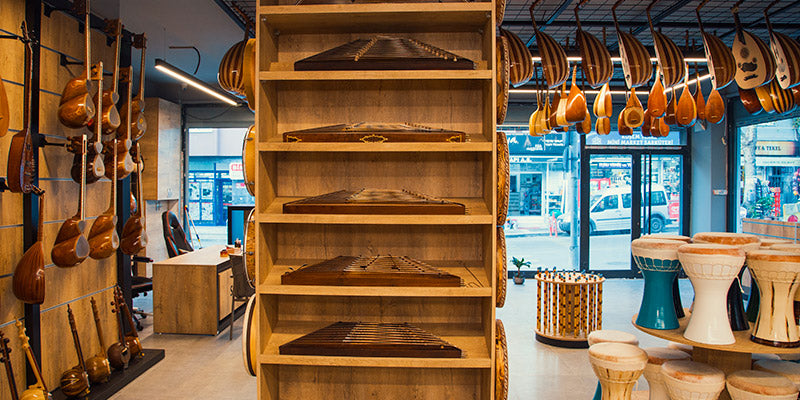
When we think of Iran music and musical instruments, santoor (santur, sadouri, santouri) is the first instrument that comes to our mind because of its popularity and prominence in Iran classical music. Its attractive and magical sound appeals to musicians. Santoor is played with plectrum or zahme. The person who plays Santoor is called santurzen or santurî. As a musical instrument, santoor was invented in the Middle East. As the the passed, each country in the East has changed and developed their uniqe model. Every country has a new version of santur that suits their musical tunes and chords.
The santoor has a wooden case having a trapeze form. Its strings are fixed to both sides of that case; they are fixed to hitch-pins placed along the left-hand side and to wrest-pins on the right. The wrest-pins serve the tuning of santoor. The strings are grouped in fours, and each quadruple set of strings pass through a wooden part called bridge or “kharak”. Bridges are aligned both on the left and right side, almost parallel with the sides of the case, therefore they divide a set of string to three parts.
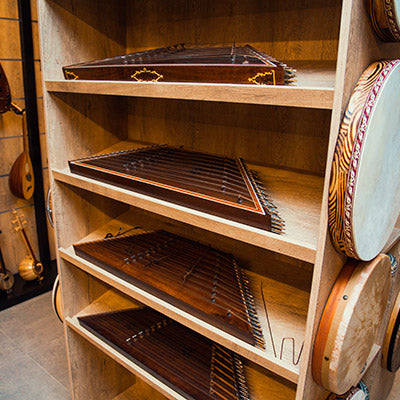
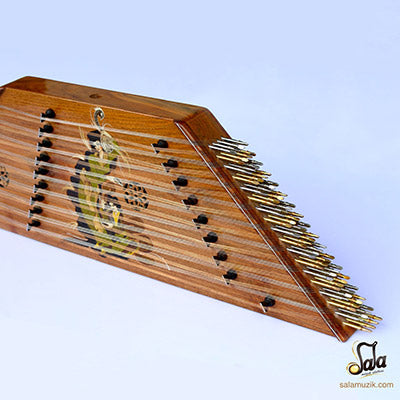
Santoor models can vary depending on its origin, its tone or special preferences of popular makers. When you decide to buy a santoor, you will see that santoors can either have 9 or 12 bridges. This situation may confuse you, so if you read our explanation regarding the differences between 9 bridge and 12 bridge santoor, we believe your mind will be clearer and you will give the right decision.
9 Kharak (Bridge) Santoor
9 kharak santoor is the most widespread santoor used in Iran. There are 9 bridges on each side, so actually there are 18 bridges on santoor. It is the most common Iranian model and has 27 notes to play.These bridges group the strings in 9 quadruple strings, and this creates 27 notes that can be played on a santoor. This is the diatonic version of the santoor. However, santoors may contain more kharaks (bridges) than 9 and, as referred below, you can find chromatic versions of santoor too. The first series of strings has a range of e′–f″, the second e″–f ‴ and the third e ‴–f″″. The tuning can be readily modified by adjusting the position of the bridges.
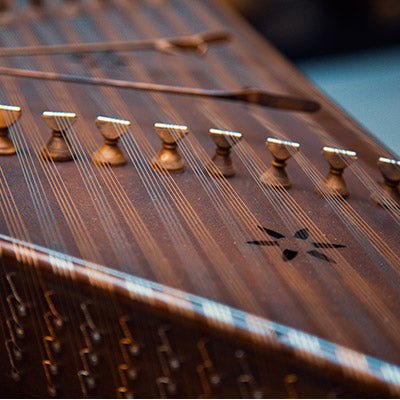
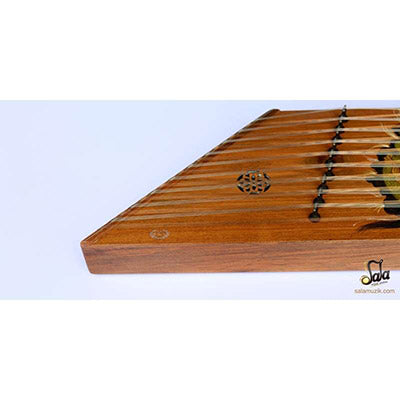
12 Kharak (Bridge) Santoor
On a 12 kharak santoor, there are 12 bridges on each side of the santoor which gives us 24 bridges and more notes to play. This kind of santoor is not common yet, however it is becoming popular due to their bigger range. More importantly, 12 bridge santoor generates non-diatonic notes and it is easier to transpose a piece from one tonic center to another. It allows players to work better on modes and performs a right tune. That is why 12 bridge (kharak) santoor may also be called as chromatic santoor. Of course, its size is a bit bigger than 9 bridge santoor. 12 kharak santur has a range starting from e’ to a”” sharp.

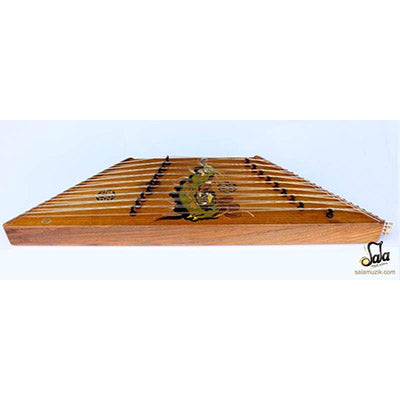





Hi Sala,
I have seen your 12 bridge santoor video but struggle with the tuning.
So I don’t understand (12 kharak santur has a range starting from e’ to a”” sharp.) as I expected something like starting with D# – E – F – F# – G – G# – A – A# – B – C – C# – D – …
Please can you tell me how high to tune the strings (chromatic) because this is very hard to find on the internet.
Thank you very much if you answer my question
Paul
Leave a comment